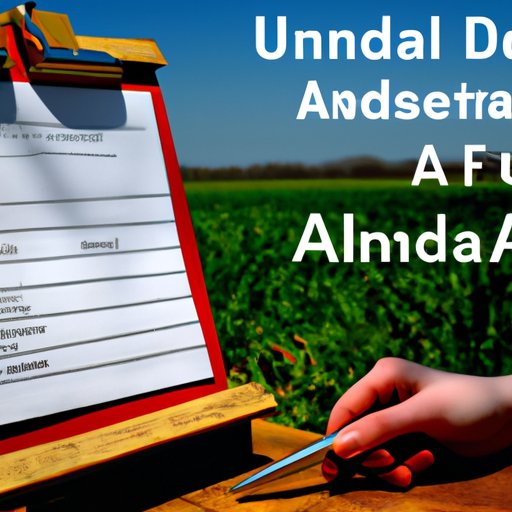Overview of USDA Financing
The United States Department of Agriculture (USDA) offers a variety of loan programs designed to help rural residents purchase or refinance homes. These loans are often referred to as USDA financing, and they provide an attractive option for those looking to buy a home in an eligible area.
Definition and purpose of USDA financing
USDA financing is a government-backed program that provides low-interest loans for rural homebuyers and homeowners. The purpose of the program is to make homeownership more affordable for rural Americans, who may not have access to traditional mortgage products due to their location.
Benefits of USDA financing
USDA financing offers several benefits for borrowers. For starters, these loans come with very competitive interest rates and no down payment requirement. Additionally, unlike some other loan programs, USDA financing does not require private mortgage insurance, which can add significantly to monthly payments. Finally, there are no restrictions on how you use the funds from a USDA loan, so you can use them to purchase a home, make repairs or even start a business.

Understanding the Requirements for USDA Financing
In order to qualify for USDA financing, there are several requirements that must be met. These include:
Eligibility requirements
The first step in qualifying for USDA financing is to determine if you live in an eligible area. According to the USDA, “Most of the U.S. population lives within the eligible areas, but some parts of the country are excluded.” In addition to geographic eligibility, applicants must also meet certain income limits to qualify for a USDA loan.
Credit score requirements
In general, the minimum credit score required for USDA financing is 640. However, some lenders may require a higher score depending on the type of loan and other factors. It’s important to check with your lender to understand their specific requirements.
Income and debt-to-income ratio requirements
Applicants must also demonstrate sufficient income to support their loan payments. Additionally, most lenders will require a debt-to-income ratio of no more than 41%. This means that the total amount of your monthly debt payments cannot exceed 41% of your gross monthly income.

Exploring Different Types of USDA Loans
The USDA offers a variety of loan programs, each designed to meet different needs. Let’s take a closer look at some of the most popular options:
Direct loans
Direct loans are the most common type of USDA loan. These loans are available to low- and moderate-income households and offer up to 100% financing with no down payment. Direct loans are typically used for purchasing a home, making improvements or refinancing an existing mortgage.
Guaranteed loans
Guaranteed loans are similar to direct loans in that they offer up to 100% financing with no down payment. However, these loans are offered through private lenders and are typically used for purchasing a home or refinancing an existing mortgage.
Home repair loans
The USDA also offers home repair loans, which can be used to make necessary repairs and improvements to a home. These loans are only available to low-income households and are typically used to repair or replace roofs, windows, doors and plumbing systems.
Business and industry loans
The USDA also offers business and industry loans, which are designed to promote economic development in rural communities. These loans can be used to finance a wide range of projects, including business expansions and job creation.
Comparing USDA Financing to Other Loan Options
When it comes to financing a home purchase, there are several loan options available. Here’s a brief overview of some of the most popular alternatives to USDA financing:
Mortgage loans
Mortgage loans are the most common type of loan used to finance a home purchase. They are typically offered through banks and other financial institutions and usually require a down payment of between 3% and 20%, depending on the type of loan.
FHA loans
FHA loans are government-backed loans that are insured by the Federal Housing Administration. They are designed to help low- and moderate-income households purchase a home and require a down payment of just 3.5%.
VA loans
VA loans are available to veterans and active duty military personnel. These government-backed loans offer up to 100% financing with no down payment and are typically easier to qualify for than other types of loans.
Tips for Applying for USDA Financing
Applying for a USDA loan requires patience and preparation. Here are some tips to help you get started:
Gather all necessary documents
Before applying for a USDA loan, it’s important to gather all the necessary documents, such as tax returns, bank statements and proof of income. Having all this information ready will make the application process smoother and faster.
Understand the loan process
It’s also important to understand the loan process from start to finish. Knowing what to expect can help you avoid any surprises and ensure that you’re prepared for every step along the way.
Get pre-approved
Getting pre-approved for a loan is a great way to show sellers that you’re serious about buying a home. Pre-approval can also help you understand exactly how much you can afford to spend on a home.
Shop around for the best rates
Finally, it’s always a good idea to shop around for the best rates and terms. Different lenders may offer different rates and fees, so it pays to compare your options before committing to a loan.

Common Misconceptions about USDA Financing
Despite its many benefits, there are still some misconceptions about USDA financing. Let’s take a look at some of the most common myths:
USDA loans are only for rural areas
Many people believe that USDA loans are only available to those living in rural areas. While most of the eligible areas are rural, there are some suburban and urban areas that qualify as well.
USDA loans are difficult to qualify for
Another common misconception is that it’s difficult to qualify for a USDA loan. While these loans do have some strict requirements, they are generally easier to qualify for than other types of loans.
USDA loans take a long time to process
Some people think that USDA loans take longer to process than other types of loans. However, the average time to close a USDA loan is around 45 days, which is comparable to other types of loans.
USDA loans are too expensive
Lastly, some people think that USDA loans are too expensive. However, these loans come with very competitive interest rates and no down payment requirement, making them an attractive option for many borrowers.
Conclusion
USDA financing can be an attractive option for those looking to purchase a home in an eligible area. With no down payment requirement and very competitive interest rates, these loans offer several benefits for borrowers. Although there are some strict eligibility requirements, USDA financing can be a great way to finance your next home purchase.
(Note: Is this article not meeting your expectations? Do you have knowledge or insights to share? Unlock new opportunities and expand your reach by joining our authors team. Click Registration to join us and share your expertise with our readers.)
